In the event of a sudden cardiac arrest, the first few minutes are crucial. Every minute without resuscitation reduces the chances of survival. Here’s some info about what you can do to help, because getting an ambulance to a rural location quickly was always challenging. And now, with emergency services at full stretch, it’s even tougher. The Heathfield Community First Responder volunteers can often be on the scene more quickly. But in those vital first few minutes after a cardiac arrest if we can apply chest compressions, and use a defibrillator, the sufferer will have the best chance of staying alive until the emergency services can take over. So, in the event of an emergency, we all need to know what to do and where to find our nearest defibrillator.
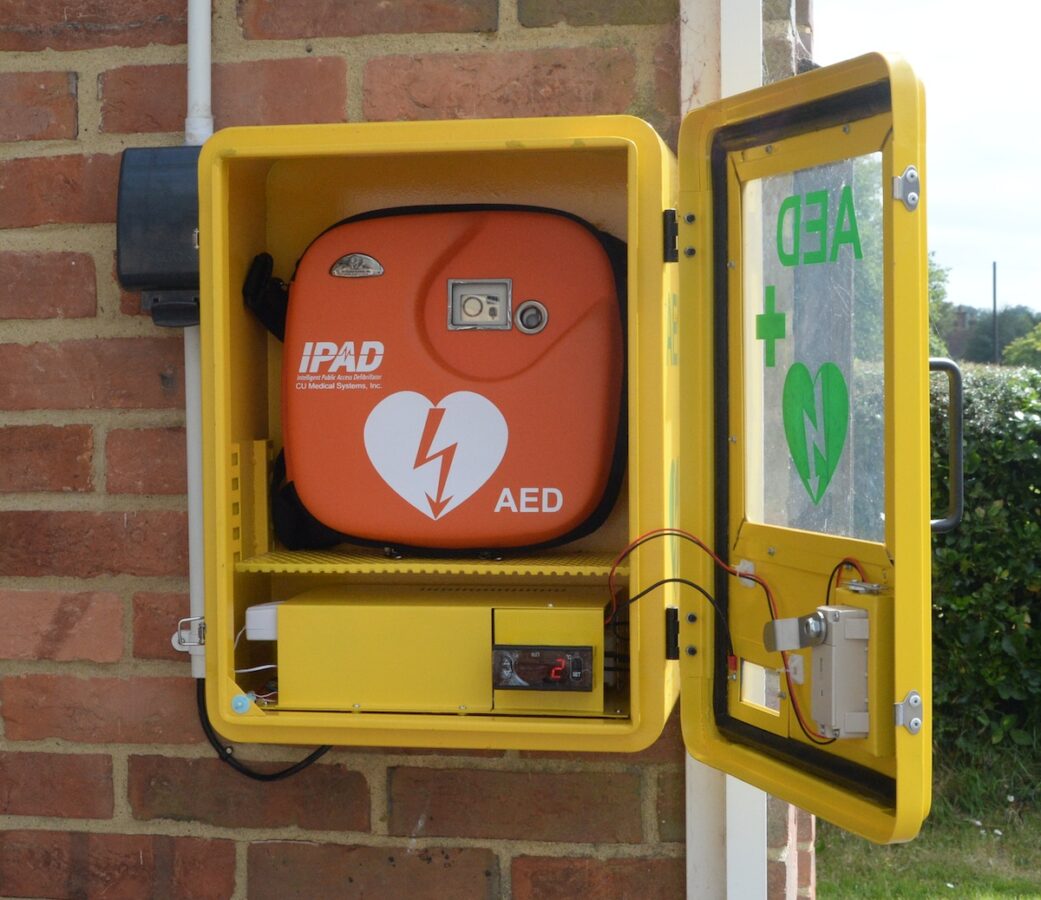
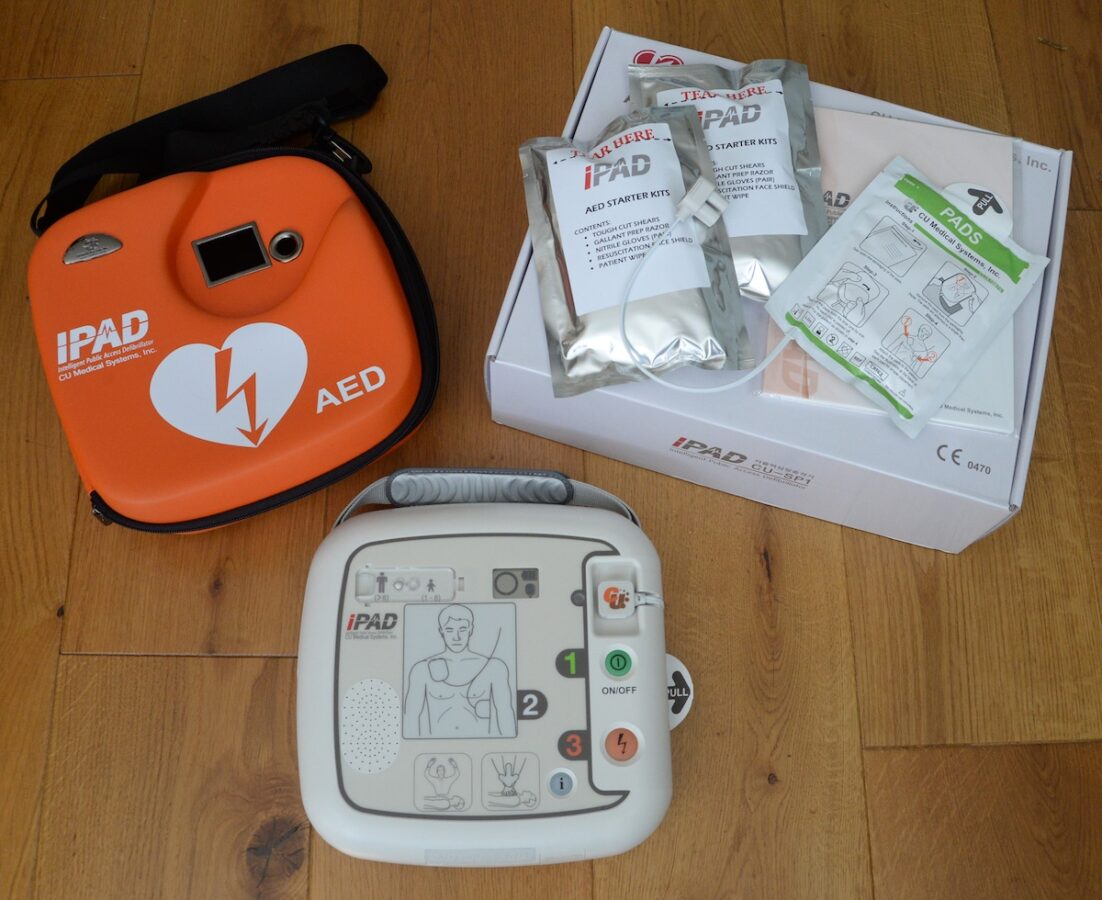
A network of local AEDs funded and operated by the community, for the whole community
Five years ago our local communities came together to help raise the funds for the network of defibrillators (AEDs) we have protecting us. All those defibrillators are going strong and are now the responsibility of Warbleton and Heathfield Parish Councils, with routine safety checks being carried out by the Heathfield First Responders team. We thought now would be a good moment to remind ourselves of where the defibrillators are locally, and what we should do in the event of a cardiac emergency.
Our local Resuscitus campaign successfully raised funds for and installed AEDs in Rushlake Green, Bodle Street Green, Three Cups Corner, Punnetts Town, Cade Street, Old Heathfield and Warbleton. There are also community AEDs in Dallington, Cowbeech, Broad Oak, Vines Cross, Horam, Herstmonceux, and across the Heathfield area (see map below).
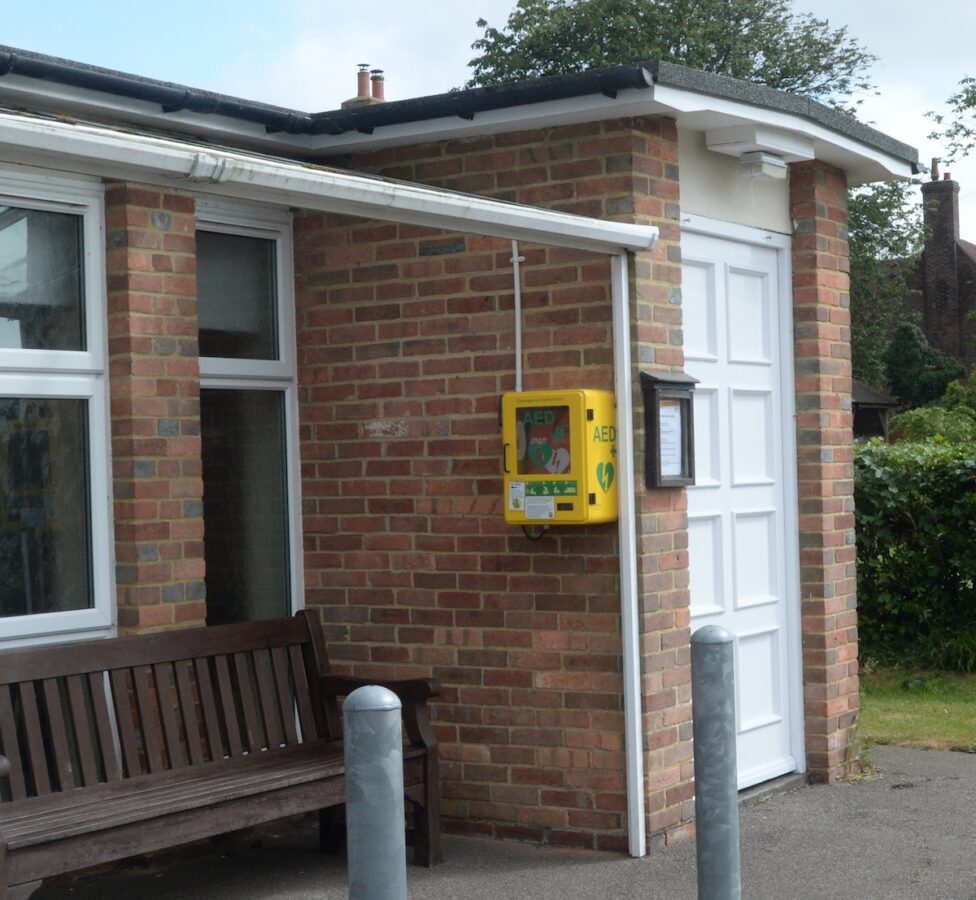

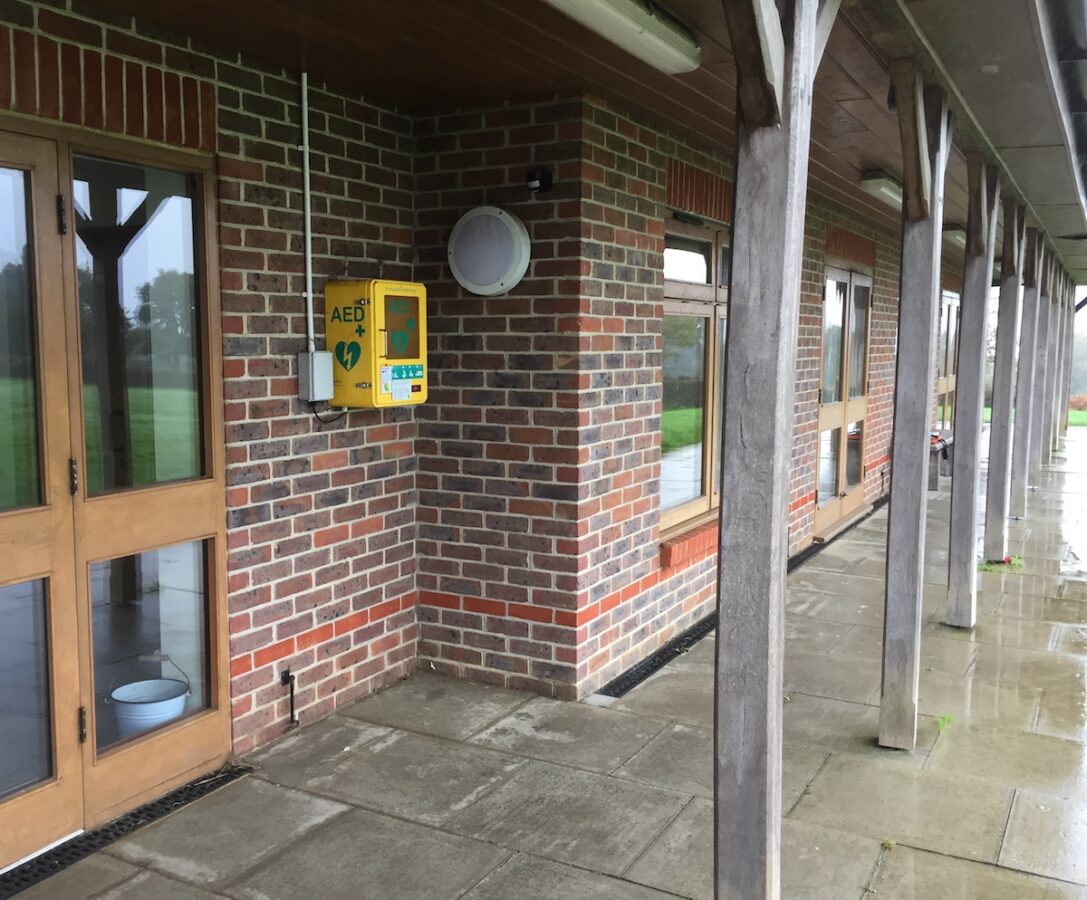
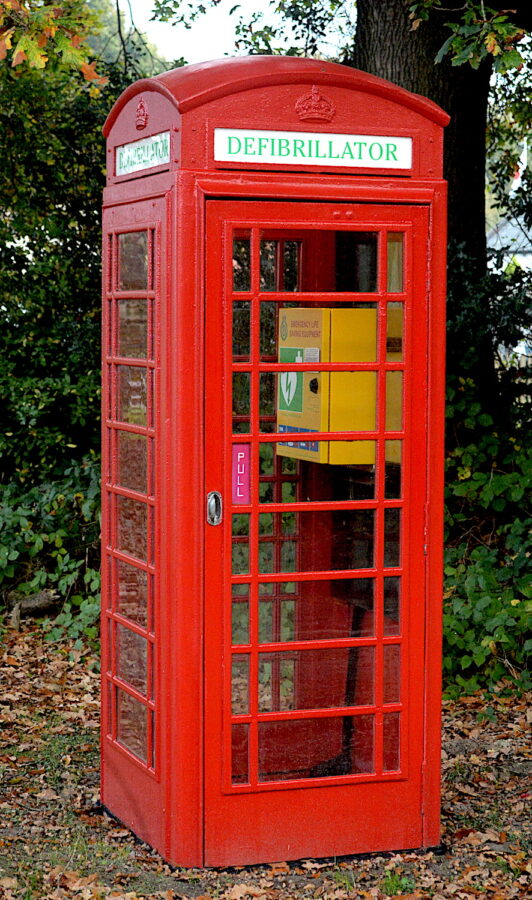
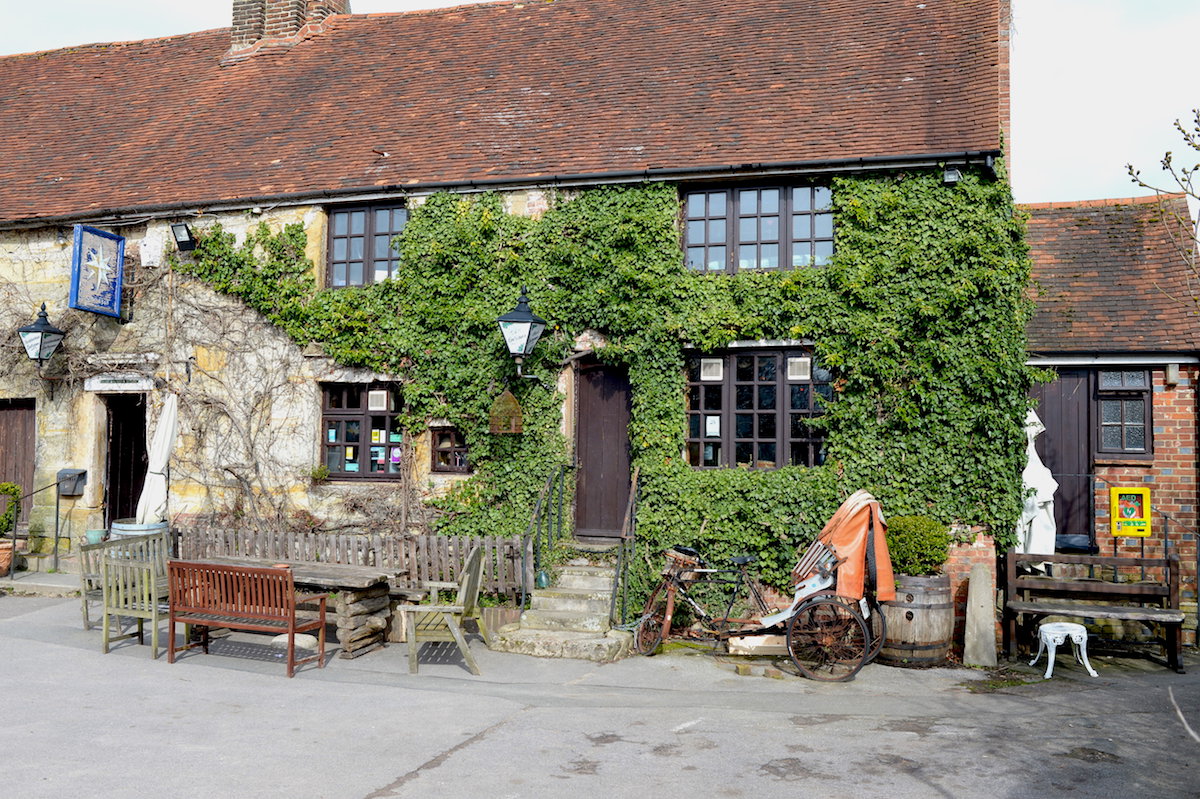
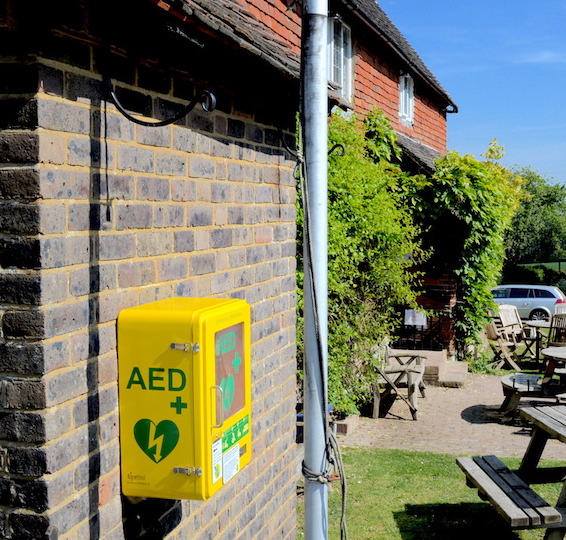

Local AEDs at Osborne House, Rushlake Green; White Horse, Bodle Street Green; Village Hall, Punnetts Town; Phone Box, Three Cups Corner
The Star Inn at Old Heathfield; Warbill-In-Tun, Warbleton; Goward Hall, Cade Street.
Where to find local AEDs
Here’s a map of the local defibrillators (AEDs) we’re aware of. If you know of others in the area please let us know.
You can use this map to familiarise yourself with the locations, just in case.

How to help in an emergency
(The following advice was put together with the kind help of the Heathfield First Responders team)
If someone collapses the first thing to do is lie them flat and ask anyone who is nearby (call out for help if necessary) to phone the emergency 999 medical services (giving the location and postcode, if known). The operator will advise what to do and the location of the nearest defibrillator. The operator will also arrange an ambulance to attend asap.
Note: A Defibrillators is sometimes called an AED (Automatic External Defibrillator) or a PAD (Public Access Defibrillator) not to be confused with the pads applied to the chest for the defibrillator to work).
You need to check the collapsed person
– do they respond to talking or shaking?
– are they breathing?
If not (and if they have no pulse), start chest compressions (hand on hand over the front of the chest, 100 firm compressions a minute).
Tell someone else to get the defibrillator (the 999 operator will know where the nearest one is, and also the code for the cabinet if it’s locked).
Get someone to open the defibrillator. Listen to the instructions, which will tell you to place the two pads on the chest (one on the front, the other on the left side) and what to do next. Make sure everyone stands clear before the button is pressed – the defibrillator will talk you through this and what to do next. If no pulse returns, continue to do chest compressions until the defibrillator recharges.
Using an AED is very easy. Anyone can do it. There are instructions on the device and audio prompts to help you.
Learning more about using defibrillators
The Heathfield First Responders also regularly run resuscitation briefing sessions. Look out for a newsletter from the First Responders here on the Village Leaf coming up soon.

Recent Comments